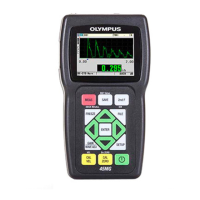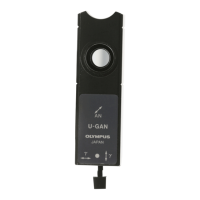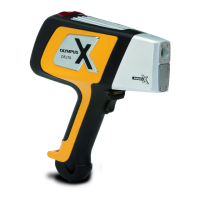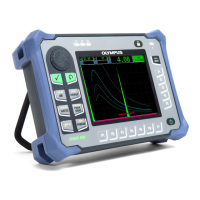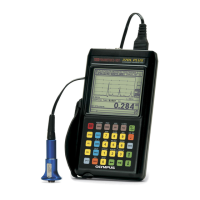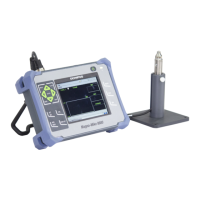DMTA-10043-01EN, Rev. C, July 2016
Standard Calibration Measurement
37
5. Uncouple the transducer from the block and use the [], [], [], and [] arrow
keys to enter the thickness of the thick block.
6. Couple the transducer to the thin block and press [CAL ZERO] or [Cal Ø].
7. When the reading is stable, press [ENTER] or [].
8. Uncouple the transducer from the block and use the [], [], [], and [] arrow
keys to enter the thickness of the thin block.
9. Press the [MEAS] key to complete the calibration and go to the measurement
mode.
Velocity calibration should always be performed on the thick sample and zero
calibration should always be performed on the thin sample.
Before calibrating, the measured thickness value while coupled to the thin calibration
block should be within ±0.20 mm (±0.010 in.) of the correct thickness. If the indicated
thickness is two or more times the actual thickness of the thin calibration block with a
good approximate sound velocity, the gage is doubling, that is, measuring to the
second or third multiple echo. Do not attempt to do a velocity and zero calibration
under this condition. Doing so will cause an error. Instead, correct the cause of the
doubling. Either the calibration block is thinner than the specified capability of the
transducer, the transducer is malfunctioning, or the gage is malfunctioning.
5.4 Material Velocity Calibration
Material velocity calibration is to be performed when material sound velocity is
unknown by using a calibration block made from the material to be measured. When
material sound velocity is known, the velocity may be entered directly.

